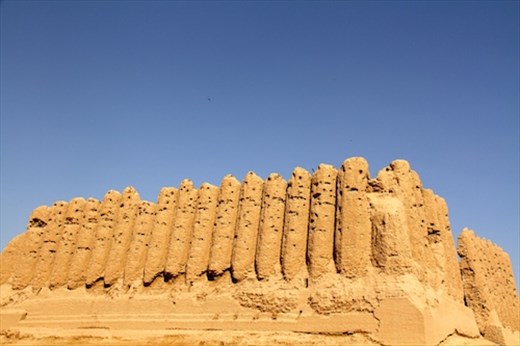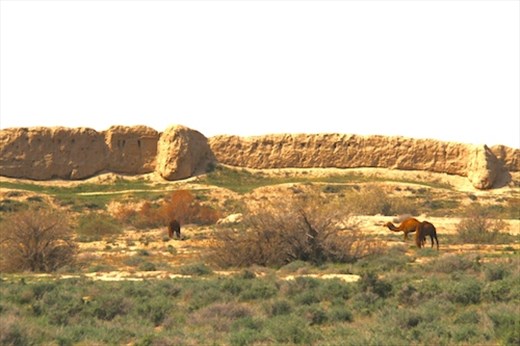KSENIA’S ENTHUSIASM — AS A GUIDE, A WANNABE ARCHEOLOGIST and as a Turkmen — is almost palpable. At 25 she has been guiding for little more than a year and what she lacks in experience she more than made up for by her childlike wonder and imagination as we explored the ancient sites of western Turkmenistan. She picked us up at nine o'clock in Ashgebad and flew with us to Mary (MAR-ee) near the Afghan border. After a stop for water and lunch provisions we headed three hours into the desert to the on-going excavations at Gonur, through acres of blooming poppies nourished by the recent rains.

Color in the desert
Knossos had its Sir Arthur Evans; Gonur had Victor Sarianidi. From its discovery in 1972 until his death in 2013, Sarianidi was the undisputed expert on the area. And like Evans, Sarianidi claimed “discoverer’s rights” to concoct a history of this wonderful site. He believed that Gonur was the birthplace of the first monotheistic religion, Zoroastrianism, some 5000 years ago. The site is peppered with fire temples supporting his claim as well as fermentation vessels for the production of the narcotic “haoma” used in Zoroastrian ceremonies. Gonur covers about 40 hectares, including the reconstructed “royal palace,” dwellings, storage vaults and a necropolis. The site is littered with pottery fragments, some left in situ in the active digs but many of the discoveries have been re-buried to protect them until money is available for permanent preservation. It is believed that the city declined when the Muragab River changed course, leaving Gonur without water.

Still here after 5000 years - Gonur

Great Kiz Kala, Merv
Merv, about 30 km from Mary, is better known than Gonur, with at least a dozen mentions in the Bible. Once known as the “Queen of the World,” Merv stood alongside Damascus, Bhagdad and Cairo as one of the great cities of Islam, a major stop on the Silk Road and the western-most outpost of Buddhism in Central Asia. While history may have more to say about Merv than Gonur, there is less to see. As the river changed course over the centuries, the city moved to stay near, one site being abandoned for a better location. Today it takes a vivid imagination to see the former glory of Merv’s mostly eroded mud-brick walls and crumbling fortresses.

Mud walls and camels, Merv